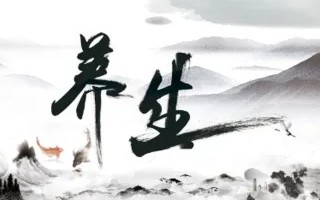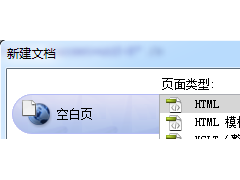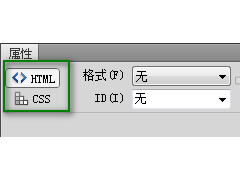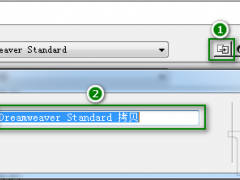万圣节简介(中,英文版)
关于万圣节有这样一个故事。是说有一个叫杰克的爱尔半兰人,因为他对钱特别的吝啬,就不允许他进入天堂,而被打入地狱。但是在那里他老是捉弄魔鬼撒旦,所以被踢出地狱,罚他提着灯笼永远在人世里行走。在十月三十一日爱尔兰的孩子们用土豆和罗卜制作“杰克的灯笼”,他们把中间挖掉、表面上打洞并在里边点上蜡烛。为村里庆祝督伊德神的万圣节,孩子们提着这种灯笼挨家挨户乞计食物。?这种灯笼的爱尔兰名字是“拿灯笼的杰克”或者“杰克的灯笼”,缩写为Jack-o'-lantern ?在拼写为jack-o-lantern。 现在你在大多数书里读到的万圣节只是孩子们开心的夜晚。在小学校里,万圣节是每年十月份开始庆祝的。孩子们会制作万圣节的装饰品:各种各样桔红色的南瓜灯。你可以用黑色的纸做一个可怕的造形??一个骑在扫帚把上戴著尖尖帽子的女巫飞过天空,或者是黑蝙蝠飞过月亮。这些都代表恶运。当然黑猫代表运气更差。有时候会出现黑猫骑在女巫扫帚后面飞向天空的造形。在万圣节的晚上,我们都穿着爸爸妈妈的旧衣服和旧鞋子,戴上面具,打算外出。比我们小的孩子必须和他们的母亲一块出去,我们大一点的就一起哄到领居家,按他们的门铃并大声喊道:“恶作剧还是招待!”意思是给我们吃的,要不我们就捉弄你。里边的人们应该出?评价我们的化装。 “噢!这是鬼,那是女巫,这是个老太婆。” 有时候他们会跟我们一起玩,假装被鬼或者女巫吓着了。但是他们通常会带一些糖果或者苹果放进我们的“恶作剧还是招待”的口袋里。可是要是没人回答门铃或者是有人把我们赶开该怎么办呢?我们就捉弄他们,通常是拿一块肥皂把他们的玻璃涂得乱七八糟。然后我们回家,数数谁的糖果最多。还有一个典型的万圣节花招是把一卷手纸拉开,不停地往树上扔,直到树全被白纸裹起?。除非下大雪或大雨把纸冲掉,纸会一直呆在树上。这并不造成真正的伤害,只是把树和院子搞乱,一种万圣节的恶作剧。
HALLOWEEN One story about Jack, an Irishman, who was not allowed into Heaven because he was stingy with his money. So he was sent to hell. But down there he played tricks on the Devil (Satan), so he was kicked out of Hell and made to walk the earth forever carrying a lantern. Well, Irish children made Jack's lanterns on October 31st from a large potato or turnip, hollowed out with the sides having holes and lit by little candles inside. And Irish children would carry them as they went from house to house begging for food for the village Halloween festival that honored the Druid god Muck Olla. The Irish name for these lanterns was "Jack with the lantern" or "Jack of the lantern," abbreviated as " Jack-o'-lantern" and now spelled "jack-o-lantern." The traditional Halloween you can read about in most books was just children's fun night. Halloween celebrations would start in October in every elementary school. Children would make Halloween decorations, all kinds of orange-paper jack-o-lanterns. And from black paper you'd cut "scary" designs ---an evil witch with a pointed hat riding through the sky on a broomstick, maybe with black bats flying across the moon, and that meant bad luck. And of course black cats for more bad luck. Sometimes a black cat would ride away into the sky on the back of the witch's broom. And on Halloween night we'd dress up in Mom or Dad's old shoes and clothes, put on a mask, and be ready to go outside. The little kids (children younger than we were) had to go with thEir mothers, but we older ones went together to nEIghbors' houses, ringing their doorbell and yelling, "Trick or treat!" meaning, "Give us a treat (something to eat) or we'll play a trick on you!" The people inside were supposed to come to the door and comment on our costumes. Oh! here's a ghost. Oh, there's a witch. Oh, here's an old lady. Sometimes they would play along with us and pretend to be scared by some ghost or witch. But they would always have some candy and maybe an apple to put in our "trick or treat bags." But what if no one come to the door, or if someone chased us away? Then we'd play a trick on them, usually taking a piece of soap and make marks on their windows. .And afterwards we would go home and count who got the most candy. One popular teen-agers' Halloween trick was to unroll a roll of toilet paper and throw it high into a tree again and again until the tree was all wrapped in the white paper. The paper would often stay in the tree for weeks until a heavy snow or rain washed it off. No real harm done, but it made a big mess of both the tree and the yard under it. One kind of Halloween mischief.
万圣节的由来
在西方国家,每年的十月三十一日,有个Halloween,辞典解释为 “The eve of All Saints'Day”,中文译作:万圣节之夜。
关于万圣节,人们或多或少都有了一定的感性认知:知道万圣节期 间,许多公共场所乃至居家院落,都会布置上很多装璜,诸如各式鬼怪 呀、南瓜灯呀、还有黑猫以及巫婆的扫帚之类;孩子们会穿上每年不一 样的万圣节服装,拎着南瓜灯的提篓去挨家挨户地讨糖,说是“trick or treak”。除此之外,你还想多知道一点吗?我们在此简单介绍一下 万圣节的由来与习俗。
一、万圣节的由来:
关于万圣节由来的,传说最多的版本认为,那是源于基督诞生前的古西欧国家,主要包括爱尔兰、苏格兰和威尔士。这几处的古西欧人叫德鲁伊特人。德鲁伊特的新年在十一月一日,新年前夜,德鲁伊特人让年轻人集队,戴着各种怪异面具,拎着刻好的萝卜灯(南瓜灯系后期习俗,古西欧最早没有南瓜),他们游走于村落间。这在当时实则为一种秋收的庆典;也有说是“鬼节”,传说当年死去的人,灵魂会在万圣节的前夜造访人世,据说人们应该让造访的鬼魂看到圆满的收成并对鬼魂呈现出丰盛的款待。所有篝火及灯火,一来为了吓走鬼魂,同时也为鬼魂照亮路线,引导其回归。 在中世纪的中欧,曾有过基督教摧毁异教徒的历史。可是新年夜前的祭祀庆典从未真正消除,不过以巫术的形式出现。这也就是为什么我们现在的万圣节里,还留有巫婆的扫帚、黑猫、咒语等痕迹。
二、Halloween一词的产生:
很多民族都在万圣节前夜有庆典聚会,这又被叫做“All Hallow E'en”、“The Eve of All Hallows”、“Hallow e'en”,或者“The eve of All Saintas'Day”。最终约定俗成演变成了“Halloween”,中文意译成了万圣节之夜。
三、“Trick or treat”的传说:
孩子们今天着装挨家要糖的习俗,据说起源于爱尔兰。古西欧时候的爱尔兰异教徒们,相信在万圣节前夜鬼魂会群集于居家附近,并接受设宴款待。因而,在“宴会”结束后,村民们就自己扮成鬼魂精灵,游走村外,引导鬼魂离开,避邪免灾。于此同时,村民们也都注意在屋前院后的摆布些水果及其他食品,喂足鬼魂而不至于让它们伤害人类和动物或者掠夺其他收成。后来这习俗一直延续下来,就成了孩子们取笑不慷慨之家的玩笑。至于南瓜灯也至少有两种说法。一种说是人挖空了南瓜又刻上鬼脸点上烛火用以驱散鬼的;另一种说是鬼魂点上的烛火,试图骗取人们上当而跟着鬼魂走,所以人们就在南瓜表面刻上一个嘲讽的脸面,用以调笑鬼魂:哼!傻瓜才会上你的当。传说因为首用南瓜的是一位爱尔兰人Jack,所以人们又将鬼脸南瓜灯叫做Jack-O-Lantern。
四、现在的万圣节
万圣节流传到今天已经完全没有了宗教迷信色彩,它成了一个孩子们的节目,也是年轻人化装舞会的节目。
社会对节日的活动也一直做着正面的引导:要求大人教育孩子们不做恐吓性的恶作剧,也要求大人带孩子一起出门(一般是大人架车停在路边,小孩去敲门讨糖)。大人应该要求孩子只许去门口有节日布置的并点了灯的人家,否则不去打扰。另外讨糖过程的始终必须站在大门口等待,不许进屋,讨回的糖也要交大人检查后才许吃。对接待孩子的人家也要求不给自家制作的食品也不给未包装的食品。
公共场合以及居家周围的节日布置都是自愿的。鬼脸南瓜灯、白网黑蜘蛛等,都是节日的装点,已全然没有骇人之鬼魅色彩。有的女学生还端端在这时候会买一对南瓜或者鬼骷髅的耳环来佩带。如果有哪家的布置做得过分恐怖了,会遭到有关方面的制止,媒体也会令其暴光,让公众指责。
万圣节的服装,也是万人万相,不是单调的大鬼小鬼了。有许多渠道教授人们如何制作万圣节服装。比如说制作最简单的鬼服就用一张白床单顶在头上,别忘了扣两个洞留出眼睛就是;若是要扮演魔术师,就穿上黑衣黑裤,再戴上黑礼帽,并在礼帽与头顶之间藏一只绒毛小兔备用;还教大人如何把孩子打扮成小天使,白衣白裤,再从背后怎么绑一个手电筒在头上;也有教如何把孩子打扮成他们喜欢的卡通形象的。当然服装、道具业的商人们,就更有文章可做了。
学校在万圣节是不放假的。有时学校出面组织晚会,有时不甘寂寞的学生们也会自己主办小型晚会;而朋友、家人间互寄贺卡祝万圣节快乐则成为每年十月间流行的习俗。如今网际网路的发达使得送万圣卡更为方便经济,有的网站还别出心裁地设计了各种具有声响动画效果的万圣卡 总之,万圣节已成为西方人一个很普通的季节性节日。有很多人将此看作秋的结束以及冬的到来。万圣节一过,人们就开始期盼感恩节、圣诞节乃至新年了。
万圣节
万圣节在西方又称为"鬼节",为每年的十月三十一日,现在"南瓜灯"、"巫婆的扫帚"、"黑猫"以及各式鬼怪的服装都已成为万圣节的标志,万圣节已演变成除了圣诞节、感恩节之外的西方历史悠久的第三大节日,许多地方在这一天到来之际举办盛大的化妆舞会来庆祝。
万圣节的起源
最早是公元前,那时的新年是十一月一日,在这一天的前一夜称为圣夜,所有的灵魂会在万圣节的前夜造访人世,造访的鬼魂看到圆满的收成并有丰盛的款待才不会在人间闹事。所有篝火及灯火,一来为了吓走鬼魂,同时也为鬼魂照亮路线,引导其回归。住在英伦三岛、爱尔兰、法国一带的凯尔特人每逢10月31日举行庆祝活动。这一天晚上,他们预备了许多美味佳肴,让善良的鬼来吃,或者在旷野的山丘上燃起篝火,让明亮的火焰招来善鬼,驱走恶魔,这些大概是鬼节的最早形式了。后来,"鬼节"与基督教相结合,成为圣徒们的一个传统节日,才成为现在的"万圣节"。
万圣节的活动
现在的万圣节的活动多种多样,19世纪末,最早的爱尔兰和苏格兰人民开始过万圣节前夜,爱尔兰移民把万圣节前夜的习俗带到了美国,后来又传入哥仑比亚及其它拉丁美洲国家。大部分是在教堂里进行的。而美国和加拿大的万圣节成了孩子们的天堂,墨西哥的万圣节却又不同于这些国家,在北京许多商家也不错过这样的好机会。现在北京过万圣节的人们越来越多,不少外国友人将家安在了北京,但是不会忘记这个节日,他们大多会在家里过节,而在北京的酒吧则热闹非常。
万圣节的节目
电视台在万圣节期间也相继播出一些科学探险活动以及不解之迷,更增加了神秘的节日气氛,有关万圣节的节目请您关注这里。
万圣节的起源
关于万圣节起源,传说最多的版本认为,那是源于基督诞生前的古西欧国家,主要包括爱尔兰、苏格兰和威尔士。这几处的古西欧人叫德鲁伊特人。德鲁伊特的新年在十一月一日,新年前夜,德鲁伊特人让年轻人集队,戴着各种怪异面具,拎着刻好的萝卜灯(南瓜灯系后期习俗,古西欧最早没有南瓜),他们游走于村落间。这在当时实则为一种秋收的庆典;也有说是"鬼节",传说当年死去的人,灵魂会在万圣节的前夜造访人世,据说人们应该让造访的鬼魂看到圆满的收成并对鬼魂呈现出丰盛的款待。所有篝火及灯火,一来为了吓走鬼魂,同时也为鬼魂照亮路线,引导其回归。
在中世纪的中欧,曾有过基督教摧毁异教徒的历史。可是新年夜前的祭祀庆典从未真正消除,不过以巫术的形式出现。这也就是为什么我们现在的万圣节里,还留有巫婆的扫帚、黑猫、咒语等痕迹。
Halloween一词的产生:
很多民族都在万圣节前夜有庆典聚会,这又被叫做"All Hallow E'en"、"The Eve of All Hallows"、"Hallow e'en",或者"The eve of All Saintas'Day"。最终约定俗成演变成了"Halloween",中文意译成了万圣节之夜。
"Trick or treat"的传说:
孩子们今天着装挨家要糖的习俗,据说起源于爱尔兰。古西欧时候的爱尔兰异教徒们,相在万圣节前夜鬼魂会群集于居家附近,并接受设宴款待。因而,在"宴会"结束后,村民们就自己扮成鬼魂精灵,游走村外,引导鬼魂离开,避邪免灾。于此同时,村民们也都注意在屋前院后的摆布些水果及其他食品,喂足鬼魂而不至于让它们伤害人类和动物或者掠夺其他收成。后来这习俗一直延续下来,就成了孩子们取笑不慷慨之家的玩笑。
至于南瓜灯也至少有两种说法。一种说是人挖空了南瓜又刻上鬼脸点上烛火用以驱散鬼魂的;另一种说是鬼魂点上的烛火,试图骗取人们上当而跟着鬼魂走,所以人们就在南瓜表面刻上一个嘲讽的脸面,用以调笑鬼魂:哼!傻瓜才会上你的当。传说因为首用南瓜的是一位爱尔兰人Jack,所以人们又将鬼脸南瓜灯叫做Jack-O-Lantern。
万圣节的活动
现在的万圣节的活动多种多样,大部分是在教堂里进行的。整个欧洲,人们都把万圣节前夜看作尽情玩闹、讲鬼故事和互相吓唬的好机会。姑娘们在万圣节前夜努力用嘴叼起浮在水盆上的苹果,据说如果她们把苹果放在枕头下睡,就能看到将来的夫婿。好恶作剧的人偷走别人的大门、家具或招牌等物,让他们以为是恶鬼偷走的。当然,在万圣节前夜谁也不到墓地去,因为那天夜里,鬼魂都从坟墓里爬出来!今天,我们利用这些迷信作为在万圣节玩闹的手段。
美国和加拿大的孩子们在这天穿戴上古怪的服饰去按邻居家的门铃,并按传统发出"是款待我还是要我耍花招"的威胁。邻居们不管是否被吓着,总是准备了一些糖果、苹果等点心,孩子们则一一收入自己的袋内。
美国的万圣节是由欧洲人传入的,特别是爱尔兰人传入的。不过宗教色彩已很淡薄,目前成为美国儿童最喜爱的节日。10月31日当夜幕徐徐降落以后,每家每户在门口摆上一个用南瓜雕成的鬼脸,里面点上蜡烛。晚饭以后孩子们兴高彩烈地戴上早已准备好的假面具,有披头散发面目狰狞的妖魔,也有牙咧嘴、横眉立目的鬼怪,使人看了不寒而栗。近几十年来也有的孩子化装成强盗或警察、米老鼠和唐老鸭以及戴羽毛头饰的印第安人等。孩子们在家长的陪伴下走街串户,所到之外主人都必须热情款待,准备好的糖果任他们吃、拿,否则就要闹个天翻地覆。
在美国万圣节不仅仅是孩子们的节日,也是青年们的又一个狂欢节。华盛顿、纽约等大城市都是万圣节前夜最热闹的地方。青年们象孩子一样头戴各式面具,越令人恐惧越好。三五成群地聚集在一起走向市中心,"魔鬼"们狭路相逢时还相互问候。有的人还化装成总统或名人发表即兴"演讲"。在市中心广场人们尽情欢乐,构成一幅群魔乱舞的场面,直闹到深夜。
每年10月31日的万圣节是一个在美国、加拿大和不列颠群岛庆祝的节日。传统的规定是 :孩子们穿上各式服装,挨家挨户敲门索要糖果和玩小把戏的。对于老年人来说,万圣节是一次举行聚会并把自己打扮得越可怕越好的机会。网络上有很多关于如何庆祝这一节日的材料,如果你提前一个月左右加入邮递单,你将会读到大量能增长万圣节经历的好点子。
墨西哥的鬼节是在11月2日,在?天家家??舳家?婵径?镌煨偷拿姘?、煮鸡肉、热巧克力和甜玉米,并在供桌上面要摆上一些玩具,因为墨西哥人相信死去的孩童们,会在午夜时分回到自己的家中玩耍;而为死去的长辈们所准备的供桌上,则会陈列亡者的东西、鲜花、水果、照片和彩绘的骷头。
Halloween
October 31st (western countries)Halloween is one of the oldest holidays with origins going back thousands of years.
The holiday has had many influences from many cultures over the centuries. From the Roman's Pomona Day, to the Celtic festival of Samhain,to the Christian holidays of All Saints and All Souls Days. Hundreds of years ago in what is now Great Britain and Northern France, lived the Celts (凯尔特人), who worshipped nature and had many gods, with the sun god as their favorite. They celebrated their New Year on November 1st which was made every year with a festival and marked the end of the "season of the sun" and the beginning of "the season of darkness and cold. "On October 31st after the crops were all harvested and stored for the long winter the cooking fires in the homes would be extinguished. The Druids, the Celtic priests, would meet in the hilltop in the dark oak forest (oak trees were considered sacred). They would light new fires and offer sacrifices of crops and animals. As they
danced around the fires, the season of the sun passed and the season of darkness would begin. When the morning arrived the Druids would give an ember from their fires to each family who would then take them home to start new cooking fires. These fires would keep the homes warm and free from evil spirits.The November 1st festival was called Samhain pronounced "sow-en"). The festival would last for 3 days. Many people would parade in costumes made from the skins and heads of their animals. This festival would become the first Halloween.
The Celtics would carry a lantern when they walked on the eve of October 31. These lanterns were carved out of big turnips (大头菜) and the lights were believed to keep the evil spirits away. Children would carve faces in the turnips. These carved turnips were called "jack-o-lanterns. It is said that the jack-o-lantern" got its name from a stingy and mean old man, named Jack, who when he died was too mean to get into heaven. When Jack went to hell he was meet by the Devil who gave him a piece of burning coal and sent him away. Jack placed the burning coal in a turnip to use as a lantern to light his way. The legends claim that Jack is still walking with the lantern looking for a place to stay.When the early settlers came to America they found the big round orange pumpkin. Being larger and much more colorful than turnips, the pumpkin made great "jack-o-lanterns". Eventually the pumpkin would replace the turnip. Eventually the Pumpkin would become the most widely recognized symbol of the Halloween holiday. The history of "Trick'O'Treating" can be traced back to the early celebrations of All Soul's Day in Britain. The poor would go begging and the housewives would give them special treats called "soulcakes". This was called "going a-souling", and the "soulers" would promise to say a prayer for the dead.Over time the custom changed and the town's children became the beggars. As they went from house to house they would be given apples, buns (圆形的小甜面包), and money. During the Pioneer days of the American West, the housewives would give the children candy to keep from being tricked. The children would shout "Trick or Treat!".















